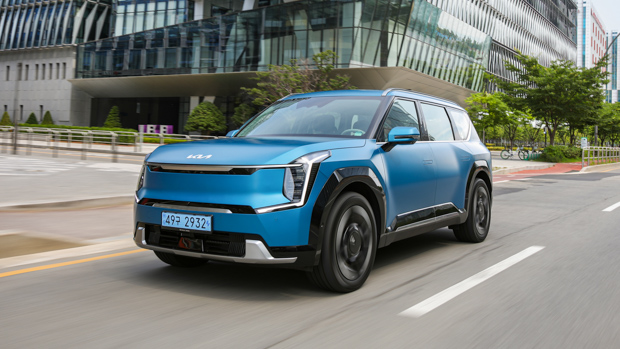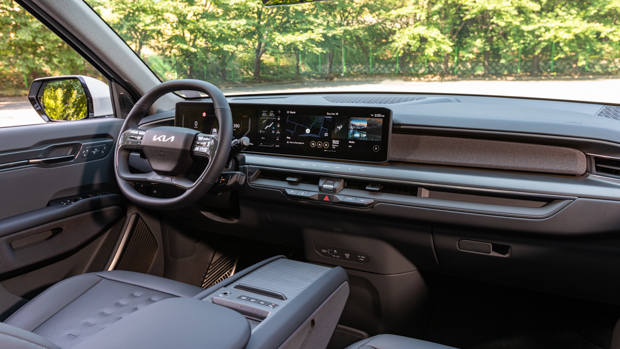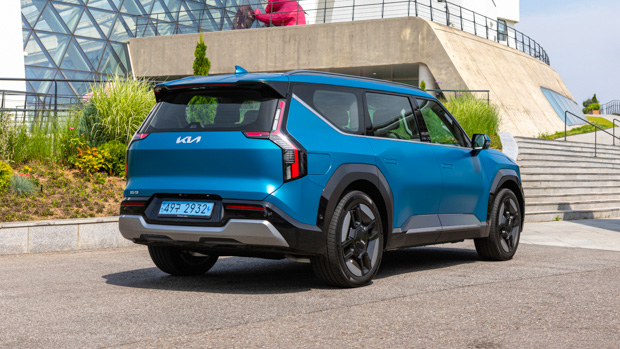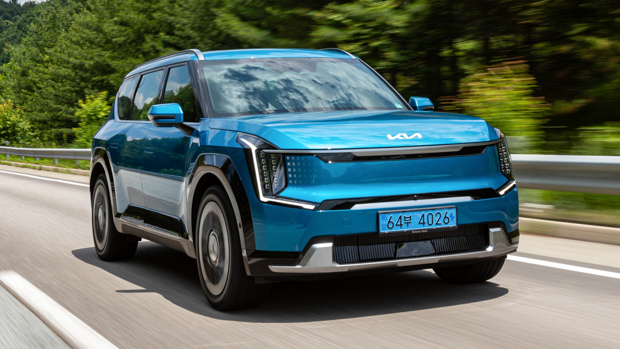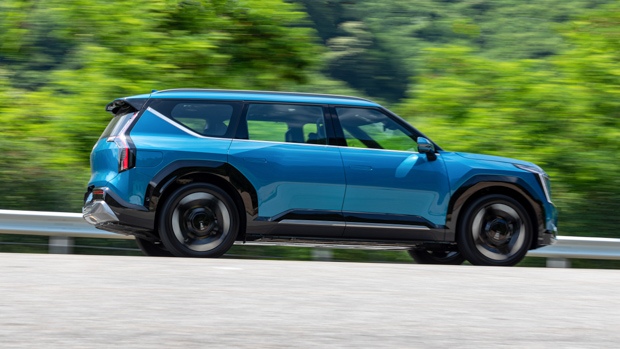-
Car Reviews
- Car News
-
Car Comparisons
Latest comparisons
- Chasing Deals
The much anticipated electric SUV becomes first Kia to wear six-digit prices on some variants, but all breach $100K on-road
A Kia dealer this afternoon spoiled the brand’s carefully laid plans to announce Australian pricing of its new flagship – the 2024 EV9 large electric SUV.
The dealer leaked details of final pricing for the EV9 SUV and that pricing was immediately confirmed by Kia head office.
In what will come as a shock to some, all three EV9 variants for Australia cost more than $100,000 before on-road costs with even the cheapest ‘Air’ model priced at $97,000 before other charges.
The trio of EV9 variants for Australia then takes in the $106,500 ‘Earth’ mid-spec grade before heading up to the $121,000 GT-Line.
Only the $97K EV9 Air runs with a circa-74kWh usable battery and rear-wheel drive, while both the Earth and GT-Line specs have a larger circa-95kWh usable battery and dual-motor AWD.
A six-figure price has been speculated and expected for some time, with the three-row electric SUV also marking its territory within a segment that currently features little direct competition.
But there was hope for an entry-level EV9 that would not breach the $100,000 mark, which sits slightly above the positioning of the brand’s smaller EV6 GT sports-SUV.
Instead, Kia has positioned the EV9 has a direct rival to the likes of the Volvo XC90 and even the Audi Q7 in some grades – established large luxury SUVs.
Does the all-electric Kia EV9 best those combustion cars? Our review next week will reveal the answer.
True three-row electric SUVs are currently few and far between. Perhaps the most obvious alternative to the EV9 is the Mercedes-Benz EQS SUV, which costs from $194,900.
The EV9 has undergone local steering and suspension tuning in Australia. The process was designed to refine some rough-riding characteristics we experienced on our first overseas drive earlier in 2023.
Only the EV9 Air runs with the simpler rear-wheel drive (RWD) powertrain, delivering 160kW of power and 350Nm of torque. That’s good enough for a claimed 8.2 second 0-100km/h sprint.
The Air is teamed with the smaller of two available batteries. The circa-74kWh usable unit is lighter and provides owners with a claimed range of 443km (WLTP) – a figure that is yet to go through independent Chasing Cars range testing. That will happen later.
From there it is a big step up to the 283kW/700Nm powertrain used by the dual-motor Earth and GT-Line AWD specifications. The claimed 0-100km/h time falls to 6.0 seconds and 5.3 seconds respectively.
A larger battery is used for the AWD models measuring around 95kWh in usable capacity, good enough for a claimed range of 512km and 505km for the Earth and GT-Line respectively.
All EV9 models use the more sophisticated of two versions of Kia’s e-GMP EV architecture. 800-volt charging capability is included with peak charging speeds of about 240kW available on compatible DC chargers.
Kia says a 10-80 percent charge (a circa 50 to 400km recharge session) takes 20 minutes for the RWD model or 25 minutes for the big-battery AWD cars. We’ve tested this but can’t share our results until the reviews embargo lifts next week.
The three specifications of the EV9 step up in performance and luxury. Here, we walk through the key features of the trio of grades.
The range kicks off with the Air RWD, priced at $97,000 (before on-road costs). That variant includes the following highlights:
From the Air, it’s a $9500 step up to the Earth AWD model. That adds the larger battery, additional range and a considerable power bump, and also:
Finally, there is a bigger $14,500 jump to the flagship GT-Line AWD, which nabs:
Six colours are available on all three variants: flare red, snow white pearl, panthera metal, aurora black pearl, pebble grey, and iceberg green. A matte shade, ocean blue, is exclusive to the GT-Line.
Overseas, different interior colours and themes are available for the EV9, but Kia Australia has opted to take only the black/grey two-tone with metal-look inlays for now.
All prices listed are before on-road costs.
Latest news
About Chasing cars
Chasing Cars reviews are 100% independent.
Because we are powered by Budget Direct Insurance, we don’t receive advertising or sales revenue from car manufacturers.
We’re truly independent – giving you Australia’s best car reviews.
